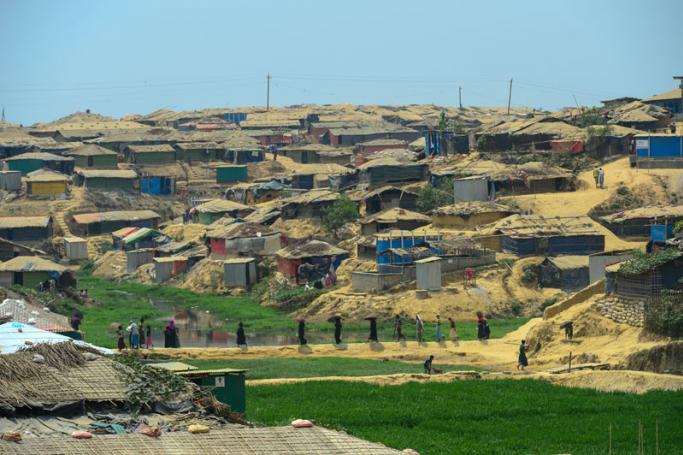Malnutrition and anemia far exceed internationally established emergency levels among ethnic minority Rohingya children who have fled to refugee camps in Bangladesh, US researchers warned on Tuesday.
A total of 269 children aged between six months and five years were examined in the Kutupalong refugee camp in October 2017, said researchers at the US Centers for Disease Control and Prevention (CDC).
Nearly 700,000 Rohingya, a stateless Muslim minority, have fled from Myanmar to Bangladesh to escape a military crackdown since August.
In the study, 24 percent of children were deemed to have acute malnutrition, as indicated by their height, weight and arm circumference, putting them at increased risk of illness, starvation and death.
Chronic malnutrition was observed in 43 percent of children, and 48 percent had severe anemia, or low iron levels.
The global emergency threshold -- the point when the situation is deemed a high public health concern and immediate actions must be taken -- for acute malnutrition is 15 percent, and for anemia it is 40 percent, according to the researchers.
"High prevalence of anemia and poor dietary diversity highlight the need to provide more diversified family rations, expand supplemental fortified food distributions, and support continued breastfeeding," said the research letter in the Journal of the American Medical Association (JAMA).
Researchers cautioned that their study was limited to one camp only.
"A small sample size was used to provide rapid results in the context of an emergency; nutritional outcomes may differ in other refugee camps," said the report.
© AFP
You are viewing the old site.
Please update your bookmark to https://eng.mizzima.com.
Mizzima Weekly Magazine Issue...
14 December 2023
Spring Revolution Daily News f...
13 December 2023
New UK Burma sanctions welcome...
13 December 2023
Spring Revolution Daily News f...
12 December 2023
Spring Revolution Daily News f...
11 December 2023
Spring Revolution Daily News f...
08 December 2023
Spring Revolution Daily News f...
07 December 2023
Diaspora journalists increasin...
07 December 2023
Mizzima interview with Mr Adriano Campolina, Chief Executive, Action Aid International












